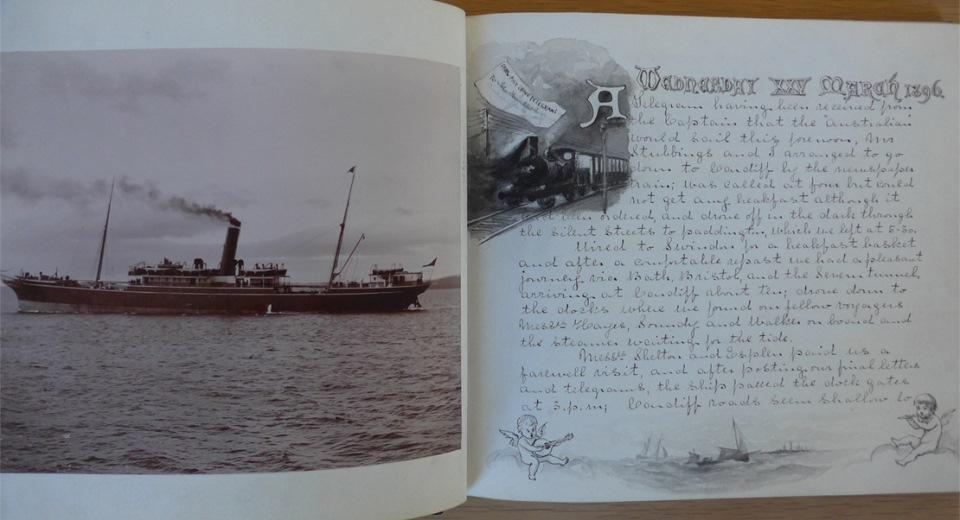
19 Jan 2017
There are many accounts of sea voyages and cruises amongst the collection of the Caird Library and Archive, but for this post I have chosen to highlight JOD/53; an account by John Hamilton of a voyage from Cardiff to Suez on board the ship Australian in 1896.
This journal stood out for me, not because this holiday cruise was particularly eventful, but because almost every page is illustrated with sketches and photographs taken or purchased during the journey.
Hamilton and his companions left London to meet the Australian at Cardiff on 25 March 1896, and the journal concludes just over a month later with their return to London. His journal covers his daily activities, life on board the ship, the weather, and observations on the world as they sailed past. Occasionally the illustrations will reflect events in the journal, such as an image of a man struggling to steer the ship during their journey through a Mediterranean plagued by bad weather and rough seas.

Throughout the journey Hamilton describes the surrounding area, for example after passing the Rock of Gibraltar:
'After entering the Mediterranean and looking back, the light and shade on the Rock were wonderful, as it stood up pearly grey against the light blue sky with the dark green sea sparkling in the sunshine'.
Having reached Suez, they left the Australian and travelled inland to Cairo. Whilst in Egypt his illustrations are mainly focused on local dress, or inspired by inscriptions on the various ancient monuments they visited, including Memphis and the Pyramids at Giza.
From one of the illustrations it would also appear that Hamilton may have viewed the mummy of Rameses II, which had been discovered in 1881; or perhaps having seen the enormous statue depicted in the photograph, he was inspired to illustrate a page in that way.

Occasionally, Hamilton’s comments on the local people he encountered, or the way in which he and his friends acquire artefacts or bones as souvenirs when visiting ancient tombs, stand out negatively to a modern reader, but are reflective of the period in which this journal was written and illustrate the attitudes of the time.
'The alabaster walls were covered with slightly raised carving like cameos; and in perfect preservation the inscriptions relating to the fifth and sixth dynasties 5000 to 6000 years ago; I picked up a little bone as a relic, Soundy [one of his travelling companions] captured a skull… '
He and his companions were also obviously used to a certain standard of living, and he usually had at least one complaint about virtually every stop they made: be it the flies, locals asking them for money; the food, the rooms in the hotels or the carriages of the trains.
Having concluded their tour of the various ancient sites in Egypt they departed from Suez on board another vessel and returned home via Italy, Switzerland and France. On the way they stopped at, amongst other places, Rome, Florence, Venice and Paris before finally returning to London.
Our passage up the Grand Canal was … utterly unlike anything we had anticipated. Its picturesque palaces standing sheer out of the sea looked like a visionary scene.

Mark Benson
Library Assistant